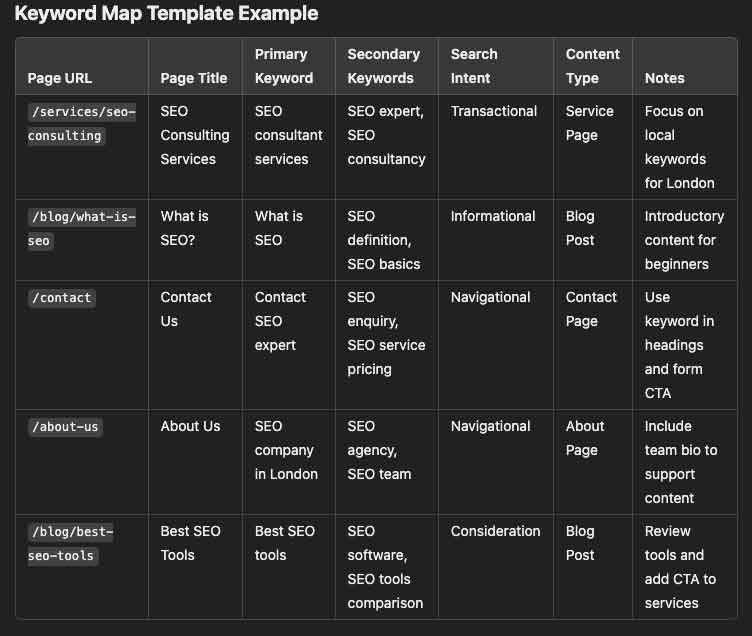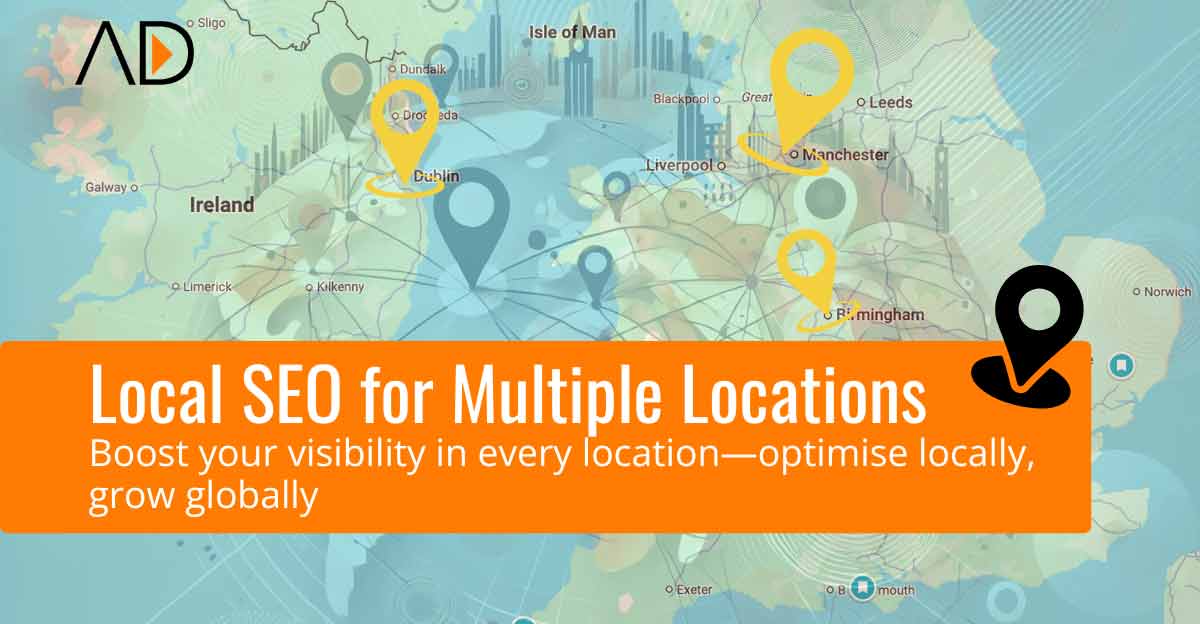Learning how to do keyword research for SEO is crucial for improving your website’s visibility and achieving higher rankings in search engine results.
Keyword research is the foundation of any successful SEO strategy. Whether you’re launching a new website, updating existing content, or planning a digital marketing campaign, understanding how to identify and target the right keywords is essential for boosting your site’s visibility in search engine results.
Done correctly, keyword research helps you tap into what your audience is searching for, allowing you to create content that resonates and drives traffic.
In this guide, we’ll walk you through every step of the keyword research process, from identifying seed keywords to using advanced tools for tracking and improving your rankings. By the end, you’ll know how to do keyword research for SEO, how to optimise your content for the best ranking results, and how to avoid common pitfalls along the way.
What is Keyword Research and Why It’s Important
What is Keyword Research?
Keyword research is the process of discovering and analysing the search terms people use to find information, products, or services on the web. It helps you understand what your audience is looking for and how to position your content to match their intent. By finding the right keywords, you can tailor your content to increase the likelihood of ranking higher in search engine results.
Why is Keyword Research Important?
The significance of keyword research cannot be overstated. Without it, you risk creating content that may not align with what your target audience is searching for, resulting in lower visibility, less traffic, and missed opportunities for conversions.
Key Benefits of Keyword Research
Keyword research helps you in several ways:
- Understand user intent and behaviour: It allows you to discover the specific needs and desires of your audience.
- Identify high-value opportunities: Find keywords with good search volume and lower competition to improve your rankings.
- Prioritise content creation and optimisation: Focus your efforts on what users are actually searching for.
- Outrank competitors: With a better keyword strategy, you can target gaps your competitors may have missed.
At its core, keyword research aligns your content with the needs and search habits of your audience, leading to better engagement, increased traffic, and ultimately, higher conversions.
Keyword Research Examples by Industry
For an SEO agency, keyword research helps target terms like “SEO services,” “SEO consultants,” and “SEO for small businesses” to attract clients who need digital marketing support.
For a dentist, keyword research would focus on location-based and service-specific keywords, such as “dentist in [city]”, “emergency dental services”, or “teeth whitening near me”, to attract local patients.
For a business coach, keyword research is crucial. To reach potential clients seeking personal or professional development support, target keywords like “small business coach,” “leadership coaching” or “business coaching for entrepreneurs”.
Understanding Search Intent
What is Search Intent?
Search intent, also known as user intent, refers to the reason behind a user’s query. It’s the purpose or goal that the user has in mind when they type a particular keyword into a search engine. Understanding search intent is crucial for choosing the right keywords and ensuring your content meets the user’s expectations.
Types of Search Intent
There are four main types of search intent:
- Informational Intent: The user is looking for information or answers. Examples: “how to do keyword research” or “what is SEO.”
- Navigational Intent: The user is searching for a specific website or page. Examples: “Facebook login” or “YouTube.”
- Transactional Intent: The user wants to make a purchase or take a specific action. Examples: “buy running shoes online” or “subscribe to Netflix.”
- Commercial Investigation: The user is researching products or services before making a decision. Examples: “best SEO tools” or “top digital marketing agencies.”
Why Search Intent Matters in Keyword Research
Matching the search intent with your content is essential for improving your rankings. For example, if someone is searching for “best hiking shoes,” they are likely looking for product comparisons or reviews, not a basic product page. Understanding these nuances allows you to create content that is more relevant and likely to rank higher in search results.
The Keyword Research Process
Now that you understand search intent, let’s dive into the actual process of conducting keyword research. Here’s a step-by-step guide to help you find the best keywords for your SEO strategy.
Step 1: Identify Your Core Topics
Start by identifying 5-10 broad topics that are relevant to your business or industry. These are often the main areas where you want to focus your content. For example, if you run a digital marketing agency, your core topics might include:
- SEO services
- Digital marketing strategies
- Social media marketing
- Content creation
- PPC advertising
These core topics will serve as the foundation for your keyword research. From here, you’ll build out a more detailed keyword strategy.
Core Topic examples by Industry
For an SEO agency, core topics might include SEO services, link building, or keyword research.
For a dentist, core topics could be dental care, specific procedures like root canals or teeth whitening, and patient education about dental hygiene.
For a business coach, the core topics might focus on personal development, business strategy, and leadership training.
Step 2: Brainstorm Seed Keywords
Seed keywords are the basic search terms related to your core topics. These are usually short, general phrases that your audience might search for. For example, if one of your core topics is “SEO services,” your seed keywords might include:
- SEO services
- SEO agency
- SEO consulting
- SEO experts
To gather seed keywords, use brainstorming techniques and tools like Google Autocomplete (when you type in a search query, it suggests related terms), and check your own website analytics to see what terms people are already using to find your content.
Seed Keyword Examples for different professions
For an SEO agency, seed keywords could include “SEO consultant,” “SEO audit,” and “local SEO services.”
For a dentist, seed keywords might include “dentist in [city],” “teeth cleaning services,” or “invisalign treatment.”
For a business coach, seed keywords could include “business growth strategies,” “executive coaching,” and “small business mentor.”
Step 3: Use Keyword Research Tools
Once you have your seed keywords, it’s time to use keyword research tools to expand your list and analyse metrics such as search volume, keyword difficulty, and competition. Here are some of the best tools to use:
- Google Keyword Planner: A free tool that provides search volume, competition data, and related keyword ideas.
- Ahrefs: A paid tool with extensive keyword data, including search volume, keyword difficulty, and competitor analysis.
- SEMrush: Another popular tool that offers keyword research, competitor analysis, and search volume insights.
- Ubersuggest: A free tool by Neil Patel that offers keyword suggestions and SEO data.
- Moz Keyword Explorer: A comprehensive tool for keyword research, showing metrics such as opportunity and potential ranking.
These tools will help you find long-tail keywords (more specific phrases) and related keywords that you might not have considered. Look for keywords that have decent search volume and lower competition, as they will be easier to rank for.
Step 4: Analyse Competitor Keywords
Analysing your competitors’ keywords can give you valuable insights and help you discover new opportunities. Here’s how you can do it:
- Use tools like Ahrefs, SEMrush, or Moz to see what keywords your competitors are ranking for.
- Identify keyword gaps: these are keywords your competitors rank for but you don’t. These can be great opportunities for new content.
- Look for content gaps: find areas where your competitor’s content is weak or outdated and create something better.
By understanding what’s working for your competitors, you can build a more effective keyword strategy and potentially outrank them for high-value search terms.
How to Find Your Competitors for Different Keywords
Before diving into specific methods, it’s important to understand that your competitors can vary for each keyword.
For example, if you’re targeting “SEO services London”, your competitors might be SEO agencies based in London.
But if you’re targeting “best SEO tools”, you’ll likely be competing with SEO software companies instead. This means that your competition is not static—it’s based on the specific keyword you’re trying to rank for.
Every keyword you want to rank for can attract a different set of competitors based on:
- Search intent: What the user wants to achieve by searching for that keyword.
- Geographic location: Competitors can change based on whether your keyword has a local or global focus.
- Content type: Some keywords might bring up blog posts, while others might prioritise product pages or service offerings.
Ways to Identify Competitors for Keywords
Once you understand that your competitors can change for each keyword, you can begin identifying them through the following methods:
- Incognito Search: Open an incognito window and search for the keyword you’re interested in. This will give you an unbiased view of who is currently ranking for that keyword. Make sure to examine the first page results to see if the ranking competitors match your business type and search intent.
- Use Google Search Console: This free tool from Google allows you to track your website’s performance for specific keywords. It also provides insights into which websites are competing with you for those terms.
- Check “People Also Ask” and Related Searches: When you search for a keyword, Google will often display related searches or common questions that users ask. These can help you identify other keywords to target and reveal competitors who rank for similar terms.
- Monitor Google Ads: Competitors running ads for your keywords are often also competing with you organically. Google Ads results can give you a sense of who is investing in ranking for high-value terms.
- Paid Tools (Ahrefs, SEMrush, SpyFu): Use paid tools to find competitors for each keyword. These tools offer detailed analysis on who is ranking for specific keywords, their SEO strategies, and the difficulty of ranking against them.
Types of Keywords to Target
Short-Tail vs Long-Tail Keywords
- Short-tail keywords are general, one- or two-word phrases like “SEO” or “digital marketing.” They tend to have high search volume but are very competitive and often vague in intent.
- Long-tail keywords are longer, more specific phrases like “how to do keyword research for SEO” or “best SEO agency in London.” They typically have a lower search volume but are less competitive and more targeted.
Examples of long-tail keywords for different industries
For an SEO agency, long-tail keywords like “affordable SEO services for small businesses” are useful for attracting smaller companies with specific needs.
For a dentist, long-tail keywords such as “best family dentist in [city]” can help attract more targeted local traffic.
For a business coach, using long-tail keywords like “business coaching for solo entrepreneurs” can attract clients with very specific needs.
Primary vs Secondary Keywords
- Primary keywords are the main focus of your content. These are the terms you want to rank for, and they should be placed in key locations like the title, meta description, and headings.
- Secondary keywords are related terms that support your primary keyword. These help search engines understand the context of your content and can be sprinkled throughout your page.
LSI (Latent Semantic Indexing) Keywords
LSI keywords are terms that are semantically related to your primary keyword. These aren’t exact synonyms but are words and phrases that provide context and help search engines understand the overall theme of your content. Using LSI keywords can enhance the relevance of your content and improve its ability to rank for a variety of related searches.
The example I always give when teaching LSI keywords is “London Underground.” If your primary keyword is “London Underground,” your LSI keywords would include terms like:
- “Tube”
- “London transport”
- “Oyster card”
- “TfL (Transport for London)”
- “Central line”
- “Tube stations”
These terms all provide more context around the London Underground system, helping search engines understand that your content covers various aspects of transport in London.
Examples of LSI Keywords for Different Industries
For an SEO Agency:
If your primary keyword is “SEO services,” related LSI keywords could include:
- “search engine optimisation”
- “Google rankings”
- “backlinks”
- “technical SEO”
- “organic traffic”
For a Dentist:
If your primary keyword is “dentist in [city],” related LSI keywords might be:
- “dental care”
- “teeth whitening”
- “emergency dental services”
- “family dentist”
- “oral hygiene”
For a Business Coach:
If your primary keyword is “business coaching,” your LSI keywords could include:
- “leadership training”
- “executive coaching”
- “small business growth”
- “mentorship”
- “business strategy”
How to Evaluate Keywords for SEO
Search Volume
Search volume refers to the number of times a specific keyword is searched for in a given time frame, usually monthly. While it’s tempting to go after high search volume keywords, it’s important to remember that these are often highly competitive. When evaluating search volume:
- High-volume keywords can bring in a lot of traffic but are harder to rank for.
- Low-volume keywords may be easier to rank for but bring in less traffic. However, they often attract more targeted users with a higher intent to convert.
Finding a balance between search volume and competition is key to successful keyword research.
Keyword Difficulty (KD)
Keyword difficulty measures how hard it is to rank for a particular keyword. Tools like Ahrefs and SEMrush provide a keyword difficulty score, usually on a scale of 0 to 100. When evaluating keyword difficulty:
- Low KD keywords (0-30) are generally easier to rank for and are good for new websites or niche topics.
- Medium KD keywords (30-70) have moderate competition and are ideal for websites with some domain authority.
- High KD keywords (70-100) are very competitive and usually dominated by established websites with high domain authority.
Focus on a mix of low and medium difficulty keywords to gain traction while also working toward more competitive terms as your site grows.
Click-Through Rate (CTR) Potential
CTR refers to the likelihood that users will click on your link in the search results. Some search results, like those with featured snippets or rich snippets (e.g., reviews, images), can affect your CTR. For example, if a featured snippet answers the searcher’s question directly, fewer people may click on the actual result. When evaluating CTR potential, consider:
- SERP features: These include featured snippets, knowledge panels, local packs, etc. If your keyword triggers these features, it may affect your CTR.
- Position on the page: The higher your page ranks in the SERPs, the higher your CTR will be. Aim to rank in the top three results for the best CTR.
Cost-Per-Click (CPC)
Although primarily used in paid advertising, CPC can provide insight into the commercial value of a keyword. A higher CPC indicates that businesses are willing to pay more for clicks on that keyword, which often correlates with higher conversion potential. While you may not be running ads, keywords with a high CPC can be valuable for driving organic traffic with high commercial intent.
Advanced Keyword Research Tips
Use Search Intent to Filter Keywords
Not all keywords with high search volume are worth targeting. By filtering keywords based on search intent, you can focus on those that are most relevant to your business goals. For example:
- Transactional keywords are more valuable if you’re selling products or services.
- Informational keywords are better for building authority and attracting users in the early stages of the buyer’s journey.
Understanding and matching search intent ensures that the traffic you drive to your site is more likely to engage with your content and convert.
Leverage Google’s “People Also Ask” and “Related Searches”
Google’s “People Also Ask” and “Related Searches” sections can be great sources of keyword inspiration. These features provide insight into what users are searching for beyond the initial query. Use these suggestions to find additional long-tail keywords and create content that answers common user questions.
Find Keywords with Low Competition but High Conversion Potential
Focus on niche, long-tail keywords that may have lower search volume but high conversion potential. These keywords are often less competitive and more specific to your target audience’s needs. For example, “affordable SEO services for small businesses” is more targeted than just “SEO services.”
Use Google Trends to Spot Keyword Trends
Google Trends allows you to see how search interest for a keyword changes over time. This is especially useful for identifying seasonal trends or growing topics in your industry. By planning your content around trending keywords, you can capitalise on increasing search interest before your competitors do.
How to Prioritise Keywords for Your SEO Strategy
Segment Keywords by Search Funnel
To maximise the impact of your keyword strategy, segment keywords based on the search funnel. This helps you target users at different stages of their journey:
- Awareness stage: Users are looking for information. Target keywords that address questions or problems.
- Consideration stage: Users are comparing options. Target comparison keywords that highlight choices and solutions related to their needs.
- Decision stage: Users are ready to take action. Target transactional keywords that reflect purchase intent or service engagement.
Search Funnel Examples by Industry
1. SEO Agency
- Awareness stage: “What is SEO and how does it work?”
- Consideration stage: “Best SEO services for small businesses”
- Decision stage: “Hire SEO consultant in London”
2. Dentist
- Awareness stage: “How to relieve tooth pain at home”
- Consideration stage: “Best treatments for tooth pain”
- Decision stage: “Book emergency dental appointment in [city]”
3. Business Coach
- Awareness stage: “What does a business coach do?”
- Consideration stage: “Best business coaching programs for startups”
- Decision stage: “Hire a business coach for entrepreneurs”
4. E-commerce (Fashion)
- Awareness stage: “How to choose the right winter coat”
- Consideration stage: “Best winter coat brands for 2024”
- Decision stage: “Buy winter coat online”
5. Travel Agency
- Awareness stage: “Top family holiday destinations for summer”
- Consideration stage: “Best all-inclusive family resorts in Europe”
- Decision stage: “Book family holiday package to Greece”
Create a Keyword Map
A keyword map helps you assign specific keywords to pages on your website. This ensures that each page targets unique keywords, avoiding keyword cannibalisation (where multiple pages compete for the same keyword). By mapping your primary and secondary keywords to appropriate pages, you can make sure your content aligns with the search intent for each keyword, improving overall SEO performance.
How to Build a Keyword Map:
- List Your Target Keywords: Start by listing your primary and secondary keywords for each page.
- Match Keywords to Pages: Assign each keyword to a specific page on your website based on the relevance and intent.
- Ensure Intent Alignment: Make sure the content on each page addresses the search intent of the keyword it targets (e.g., informational, navigational, transactional).
- Avoid Keyword Cannibalisation: Check that no two pages are targeting the same primary keyword, as this can confuse search engines and dilute rankings.

Free Download 1 of 2
Download Free Keyword Map Template
To make this process easier, download our free Keyword Map Template to start organising your keywords effectively. This template will help you map out your keywords, assign them to the right pages, and track your progress as you optimise your site.
Optimising Content with Keywords
Keyword Placement
Once you’ve identified your target keywords, it’s crucial to optimise your content by placing them in the right locations. Effective keyword placement signals search engines about the topic of your content without overloading it. Here’s where to place your keywords:
- Title Tag: The most important place for your primary keyword. Keep the title clear, concise, and under 60 characters.
- Meta Description: Include your primary keyword and keep it natural. Aim for a length of 150-160 characters.
- URL: Your keyword should appear in the URL, preferably as a short, clean slug. For example, “yourwebsite.com/keyword-research-guide“.
- H1 Tag: The main heading of your content should contain your primary keyword to show its relevance to the page.
- H2 and H3 Tags: Subheadings help break up content and improve readability. Incorporate related keywords or secondary keywords here.
- Introduction: Use your primary keyword early in the introduction to signal to both users and search engines what the page is about.
- Body Content: Naturally include your keywords throughout the content without keyword stuffing. Aim for a balanced density, keeping the reader in mind.
- Alt Text for Images: Use descriptive alt text that includes your keyword, especially for featured images or infographics.
- Anchor Text: When linking internally or externally, use relevant keywords in the anchor text to improve SEO.
Free Download 2 of 2
Boost Your SEO with Our Free On-Page SEO Checklist!
Want to improve your website’s rankings and visibility? Download our free On-Page SEO Checklist to ensure your content is fully optimised for search engines and users alike. This step-by-step guide will walk you through all the essentials, from keyword placement to technical optimisation.
Avoid Keyword Stuffing
While it’s important to include keywords, overusing them can lead to keyword stuffing, which negatively affects both user experience and your SEO performance. Instead, aim to use keywords naturally within the flow of your content. Google’s algorithms are sophisticated enough to recognise the topic of your page without needing repeated keywords.
Optimise for Related Keywords
In addition to your primary keyword, it’s important to optimise for related and secondary keywords. These related terms help give search engines a more complete understanding of your content and can improve its chances of ranking for various queries. For example, if your primary keyword is “keyword research for SEO,” you might also optimise for related terms like “SEO keyword tools,” “finding the best keywords,” or “keyword strategy for SEO.”
By strategically using related keywords, you can create a well-rounded, optimised page that ranks for multiple relevant searches.
Measuring the Success of Your Keyword Research
Once you’ve implemented your keyword strategy, it’s important to track and measure its effectiveness. Here are the key metrics to monitor:
Track Rankings and Organic Traffic
Tracking your keyword rankings and organic traffic is the most direct way to measure the impact of your keyword research. Use tools like Google Search Console, Ahrefs, or SEMrush to monitor changes in keyword positions over time.
- Google Search Console: Provides detailed reports on keyword performance, search impressions, and average position.
- Ahrefs/SEMrush: Offers more advanced insights into keyword rankings, SERP changes, and competitor analysis.
Regularly check your rankings and traffic to see how well your content is performing and whether adjustments are needed.
Analyse Keyword Performance
Use analytics tools to assess the performance of your target keywords. You want to focus on:
- Click-Through Rate (CTR): This tells you how often people are clicking on your link after seeing it in search results. A low CTR may indicate your title tag or meta description needs improvement.
- Bounce Rate: If users are clicking on your page and leaving quickly, this could be a sign that your content doesn’t match their expectations, or it’s not engaging enough.
- Dwell Time: The amount of time users spend on your page is a good indicator of how well your content resonates with your audience. Longer dwell times usually suggest that users find your content useful.
Monitor Conversion Rates
Ultimately, the goal of keyword research is not just to drive traffic but to convert that traffic into leads, sales, or other desired actions. Track your conversion rates for pages optimised with keywords to see how well they perform in terms of driving real business results. Consider:
- Lead generation forms: Track how many visitors fill out forms or request more information.
- Sales or signups: Measure how many conversions can be attributed to organic search traffic driven by your target keywords.
By combining keyword tracking with conversion metrics, you can assess the overall ROI of your keyword research efforts.
Common Mistakes in Keyword Research
Avoid these common keyword research mistakes to ensure your strategy is effective:
- Not focusing on user intent: If you target keywords without understanding user intent, your content may not meet the needs of your audience, resulting in low engagement and high bounce rates.
- Over-prioritising high-volume keywords: Chasing high-volume keywords without considering competition can lead to wasted efforts on keywords that are too competitive.
- Ignoring long-tail keywords: Long-tail keywords are often easier to rank for and attract more qualified traffic, but many people overlook them in favour of short-tail keywords.
- Failing to update your keyword strategy: SEO and keyword trends evolve over time. Make sure to revisit and update your keyword strategy regularly based on new trends, tools, and audience insights.
Why Choose Us?
Unlock the Power of Expert Keyword Strategies
Your presence online matters! Conducting thorough keyword research lays the foundation for successful digital marketing. Grasping what your aligned audience seeks enables you to mold your content approach, optimize SEO, and effectively enhance website traffic. Discover how effective keyword strategies can elevate your business visibility.
- Identify Key Trends: Get insights into your audience's preferences.
- Utilise Advanced Tools: Engage with platforms like Google Trends.
- Benchmark Against Competitors: Discover strategies from competing brands.




